预约演示
更新于:2025-09-12
Nitrendipine
尼群地平
更新于:2025-09-12
概要
基本信息
原研机构- |
非在研机构- |
权益机构- |
最高研发阶段批准上市 |
首次获批日期 中国 (1987-01-01), |
最高研发阶段(中国)批准上市 |
特殊审评- |
登录后查看时间轴
结构/序列
分子式C18H20N2O6 |
InChIKeyPVHUJELLJLJGLN-UHFFFAOYSA-N |
CAS号39562-70-4 |
关联
7
项与 尼群地平 相关的临床试验NCT04931108
The Effect of Nitrendipine/Atenolol Combination on Blood Pressure Variability of Patients With Grade 1 Hypertension Compared With Nitrendipine or Atenolol Monotherapy.
Study name: The Effect of Nitrendipine/Atenolol Combination on Blood Pressure Variability.
Medicine: Nitrendipine/Atenolol; Nitrendipine; Atenolol.
Rationale: Blood pressure variability correlates with cardiovascular events and target-organ damage in hypertensive patients. Nitrendipine/Atenolol has obvious advantages in reducing blood pressure variability in hypertensive rats, but the effect of this combination on hypertensive patients is still unknown.
Objective: To evaluate the effect of nitrendipine/atenolol on blood pressure variability of patients with Grade 1 hypertension compared with nitrendipine or atenolol monotherapy.
Study design: This study is a cross-over, randomized, controlled clinical trial with two equally sized treatment groups: Nitrendipine/Atenolol (5mg/10mg); Nitrendipine (10mg) or atenolol (25mg).
Study population: Men and Women aged 30-65 years (n=32) meeting the inclusion/exclusion criteria.
Randomization and cross-over design: Eligible patients will be randomly divided into two groups. Half of patients will take nitrendipine/atenolol (5/10mg) once daily for 6 weeks first, and then evenly turn into nitrendipine (10mg) or atenolol (25mg) once daily for 6 weeks. Another half of patients will evenly take nitrendipine (10mg) or atenolol (25mg) first, and turn into nitrendipine/atenolol (5/10mg) next.
Follow up: 14 weeks.
Sample size: a total of 32 patients should be enrolled.
Timeline: After obtaining the approval of Ethics Committee of Ruijin Hospital in April 2021, recruitment will start. Patients enrollment and follow-up will be performed between June 2021 to June 2022.
Medicine: Nitrendipine/Atenolol; Nitrendipine; Atenolol.
Rationale: Blood pressure variability correlates with cardiovascular events and target-organ damage in hypertensive patients. Nitrendipine/Atenolol has obvious advantages in reducing blood pressure variability in hypertensive rats, but the effect of this combination on hypertensive patients is still unknown.
Objective: To evaluate the effect of nitrendipine/atenolol on blood pressure variability of patients with Grade 1 hypertension compared with nitrendipine or atenolol monotherapy.
Study design: This study is a cross-over, randomized, controlled clinical trial with two equally sized treatment groups: Nitrendipine/Atenolol (5mg/10mg); Nitrendipine (10mg) or atenolol (25mg).
Study population: Men and Women aged 30-65 years (n=32) meeting the inclusion/exclusion criteria.
Randomization and cross-over design: Eligible patients will be randomly divided into two groups. Half of patients will take nitrendipine/atenolol (5/10mg) once daily for 6 weeks first, and then evenly turn into nitrendipine (10mg) or atenolol (25mg) once daily for 6 weeks. Another half of patients will evenly take nitrendipine (10mg) or atenolol (25mg) first, and turn into nitrendipine/atenolol (5/10mg) next.
Follow up: 14 weeks.
Sample size: a total of 32 patients should be enrolled.
Timeline: After obtaining the approval of Ethics Committee of Ruijin Hospital in April 2021, recruitment will start. Patients enrollment and follow-up will be performed between June 2021 to June 2022.
开始日期2021-09-27 |
申办/合作机构 |
CTR20210720
尼群地平片(10 mg)人体生物等效性研究
以特一药业集团股份有限公司研制的尼群地平片(规格:10mg)为受试制剂,Bayer Vital GmbH生产的尼群地平片(商品名:Baylotensin,规格:10mg)为参比制剂,考察两制剂在空腹及餐后状态下单次给药的药代动力学参数及相对生物利用度,评价两制剂是否具有生物等效性。同时评价两种制剂在健康人体中的安全性和耐受性。
开始日期2021-04-18 |
申办/合作机构 |
NCT02217852
A Randomized, Open-label, Positive Drug Controlled Clinical Trials to Compare the Efficacy of Nitrendipine and Hydrochlorothiazide , Captopril Plus Hydrochlorothiazide and Beijing Hypotensive No.0 in Tibetan Hypertension
Several surveys had revealed that Tibetan adults had high prevalence of hypertension. However, there was no research studying the antihypertensive effect of the known drugs in Tibetan. The main arms of our study were to determine if the efficacy of lowing blood pressure and protecting target organ damage differs between nitrendipine and Hydrochlorothiazide in mild hypertension in Tibetan, and to determine if the efficacy of lowing blood pressure and protecting target organ damage differs between captopril plus Hydrochlorothiazide and Beijing hypotensive No.0 in moderate and severe Tibetan hypertension.
开始日期2014-08-01 |
申办/合作机构 |
100 项与 尼群地平 相关的临床结果
登录后查看更多信息
100 项与 尼群地平 相关的转化医学
登录后查看更多信息
100 项与 尼群地平 相关的专利(医药)
登录后查看更多信息
3,462
项与 尼群地平 相关的文献(医药)2025-07-01·ANALYTICA CHIMICA ACTA
Multi-interaction (substituted-phenylcarbamate)-hydroxypropyl-β-cyclodextrin chiral stationary phases for liquid chromatography
Article
作者: Zhu, Junchao ; Xu, Wentao ; Xu, Linna ; Cheng, Dongping ; Tong, Shengqiang ; Chen, Songlin ; Ni, Huizhen ; Chu, Chu
BACKGROUND:
(Substituted-phenylcarbamate)-β-cyclodextrin (β-CD) chiral stationary phases (CSPs) showed high enantioselectivity and complementary capabilities compared to polysaccharide-based CSPs in liquid chromatography. Most of the previous works were about preparation and application of (substituted-phenylcarbamate)-β-CD, while very limited works was available reporting modified hydroxypropyl-β-CD (HP-β-CD) used for CSP. As matter of fact, HP-β-CD was more frequently used than native β-CD as chiral selector in many chiral separation techniques. Therefore, it was great of significance to investigate preparation of multi-interaction (substituted-phenylcarbamate)-HP-β-CD CSPs and its application in chiral separation.
RESULTS:
Three new multi-interaction (substituted-phenylcarbamate)-HP-β-CD CSPs were prepared and investigated, including (3-chloro-4-methylphenylcarbamate)-HP-β-CD CSP, (4-chloro-3-methylphenylcarbamate)-HP-β-CD CSP and (5-chloro-2-methylphenylcarbamate)-HP-β-CD CSP. The structure and morphology of the three chiral selectors as well as their stationary phase were characterized by 1H NMR spectra, elemental analysis, infrared spectroscopy, scanning electron microscopy and thermogravimetric analysis. Degree of substitution, stability, repeatability and reproducibility of the (substituted-phenylcarbamate)-HP-β-CD CSPs were investigated. A total of 56 racemic compounds were examined on the three (substituted-phenylcarbamate)-HP-β-CD CSPs using reversed-phase elution mode. It was found that enantioselective recognition capability of the three (substituted-phenylcarbamate)-HP-β-CD CSPs was greatly improved compared with that of traditional HP-β-CD CSPs, which was demonstrated by the number of successful enantioseparated racemates and increased enantioseparation efficiency. Applications of the three CSPs in high performance liquid chromatographic enantioseparations indicated that each of them showed different enantiorecognition ability toward different type of racemic structures, which showed high complementary enantiorecognition ability with traditional β-CD-based CSPs.
SIGNIFICANCE:
An efficient one-pot reaction strategy for synthesis of (substituted-phenylcarbamate)-HP-β-CD CSPs was developed. It was found that enantiorecognition and peak resolutions (Rs) were greatly improved compared with traditional HP-β-CD CSP and β-CD CSP. The improved chiral separation performance of multi-interaction HP-β-CD CSPs was demonstrated, providing valuable insights for the development of efficient chiral separation methods while expanding the potential applications of HP-β-CD in chiral liquid chromatography.
2025-06-01·Journal of molecular and cellular cardiology plus
Matured hiPSC-derived cardiomyocytes possess dematuration plasticity
Article
作者: Meng, Fang ; Zebrowski, David C ; Andersson, Henrik ; Hidalgo-Gonzalez, Alejandro ; Später, Daniela ; Bjerre, Frederik Adam ; Wei, Ruofan ; Walentinsson, Anna ; Poon, Ellen Ngar-Yun ; Andersen, Ditte C ; Wang, Qing-Dong ; Kwok, Maxwell ; Hui, Yen Chin
Human induced Pluripotent Stem Cell-derived cardiomyocytes (hiPSC-CMs) are increasingly used to identify potential factors capable of inducing endogenous cardiomyocyte proliferation to regenerate the injured heart. L-type calcium channel blockers have previously been identified as a class of factors capable of inducing matured hiPSC-CMs to proliferate. However, the mechanism by which L-type calcium channel blockers promote hiPSC-CM proliferation remains unclear. Here we provide evidence that matured hiPSC-CMs possess plasticity to undergo dematuration in response to certain pharmacological compounds. Consistent with primary cardiomyocyte maturation during perinatal development, we found that centrosome disassembly occurs in hiPSC-CMs during plate-based, temporal, maturation. A small molecule screen identified nitrendipine, an L-type calcium channel blocker, and 1-NA-PP1, a Src kinase inhibitor, as factors capable of inducing centrosome reassembly in a subpopulation of hiPSC-CMs. Furthermore, centrosome-positive hiPSC-CMs were more likely to exhibit cell cycle activity than centrosome-negative hiPSC-CMs. In contrast, neither nitrendipine or 1-NA-PP1 induced centrosome reassembly, or cell cycle activity, in neonatal rat ventricular myocytes (NRVMs). Differential bulk transcriptome analysis indicated that matured hiPSC-CMs, but not NRVMs, treated with nitrendipine or 1-NA-PP1 undergo dematuration. ScRNA transcriptome analysis supported that matured hiPSC-CMs treated with either nitrendipine or 1-NA-PP1 undergo dematuration. Collectively, our results indicate that matured hiPSC-CMs, but not primary NRVMs, possess plasticity to undergo dematuration in response to certain pharmacological compounds such as L-type calcium channel blockers and Src-kinase inhibitors. This study shows that once mature, hiPSC-CMs may not maintain their maturity under experimental conditions which may have implications for experimental systems where the state of hiPSC-CM maturation is relevant.
2025-06-01·BIOCHEMICAL PHARMACOLOGY
Inhibitory effects of nimodipine, nitrendipine and felodipine on tamoxifen metabolism and molecular docking
Article
作者: Xia, Hailun ; Shen, Yuxin ; Jiang, Zheli ; Chen, Xiaohai ; Shi, Lu ; Xu, Ren-Ai ; Hong, Fengsheng
Tamoxifen, a selective estrogen receptor modulator (SERM) used in breast cancer therapy, requires metabolic activation by CYP3A4 to exert its biological effects. This study evaluated the effects of calcium channel blockers nimodipine, nitrendipine and felodipine on tamoxifen metabolism by studying their interactions with tamoxifen in vitro and in vivo. Rat liver microsomes (RLM) and human liver microsomes (HLM) were used in this study to evaluate the inhibitory potential of nimodipine, nitrendipine and felodipine on tamoxifen metabolism in vitro. A total of 28 cardiovascular drugs, including calcium channel blockers, were screened in an RLM incubation system in vitro. In RLM, nimodipine, nitrendipine and felodipine had half-maximum inhibitory concentration (IC50) values of 5.55 µM, 11.86 µM and 7.71 µM, respectively. In HLM, the IC50 values were increased to 20.38 µM, 30.06 µM, and 44.45 µM for nimodipine, nitrendipine and felodipine, respectively. The kinetic assays indicated that nimodipine and felodipine inhibited the metabolism of tamoxifen in a competitive way, whereas nitrendipine showed non-competitive inhibition in RLM. However, felodipine exhibited non-competitive inhibition, and nimodipine and nitrendipine showed competitive inhibition in HLM. Pharmacokinetic studies in rats revealed that pretreatment with nimodipine and nitrendipine significantly increased the systemic exposure of tamoxifen, as demonstrated by increasing the area under the curve (AUC), the maximum concentration (Cmax) and decreasing the clearance (CLz/F). Finally, molecular docking studies supported these findings, showing potential interactions at the active site of CYP3A4. These results suggested the necessity for careful monitoring and possible dose adjustments of tamoxifen when co-administered with calcium channel blockers in clinic.
14
项与 尼群地平 相关的新闻(医药)2025-09-12
·医药地理
引用全文
引用:刘 茜, 陈 阳, 张 彬, 等. 尼群地平片的溶出曲线考察[J]. 中国医药工业杂志, 2025, 56(7): 908-914.
DOI :10.16522/j.cnki.cjph.2025.07.010
Investigation on Dissolution Profiles of Nitrendipine Tablets
尼群地平片的溶出曲线考察
刘 茜,陈 阳,张 彬,杨永健,金 薇*
( 上海市食品药品检验研究院,国家药品监督管理局化学药品制剂质量分析重点实验室,上海 201023)
摘要
考察了7 家不同企业生产的尼群地平(1) 片与参比制剂( 商品名Bayotensin® mite) 的体外溶出行为。参照《日本药局方》(JP)18 版的溶出度试验条件,建立了超高效液相色谱(UPLC) 法测定1 片的溶出度。溶出方法为桨法,100 r/min,以1.5 g/L
聚山梨酯80 溶液900 mL 为溶出介质。并采用相似因子(f2) 法和溶出曲线相似性参数(AV 值) 法,比较了7 家企业的1 片与参比制剂溶出行为的差异。结果显示,6 家企业生产1 片的溶出曲线与参比制剂存在显著差异,仅E 企业样品与参比制剂的溶出曲线相似(f2=57.5,AV=13.4)。此外,采用GastroPlusTM 软件建立了1 片的生理药代动力学(PBPK) 模型,用其预测JP18 溶出度方法具有较好的体内外相关性,代入体外溶出曲线进行虚拟生物等效性模拟,所得生物等效性预测结果与溶出曲线相似性结果基本一致,为1 片的处方开发与筛选提供了参考。
关键词
尼群地平片;超高效液相色谱法;溶出曲线;相似性评价;体内外相关性;质量控制;一致性评价
文章节选
1970 年,德国拜耳公司从一系列1,4- 二氢吡啶衍生物中,成功开发出具有持久性作用的钙通道阻滞剂尼群地平(nitrendipine,1),并于1985 年首次在德国上市,用于治疗高血压。我国从1988 年开始批准生产仿制药。经查询国家药品监督管理局的数据库,国内共有1 片生产企业145 家,批准文号149 个。
1 属于BCS Ⅱ类药物,即低溶解性- 高渗透性药物,其制剂在体内的溶出过程是吸收的限速步骤。因此,1 片的溶出特性值得关注。目前,ChP 2020年版收录的溶出试验方法采用30%乙醇作溶出介质,与体内生理环境差异大;采用该溶出度方法检测1片的仿制制剂与参比制剂,均可达90%以上溶出(ChP 2020 年版限度为60 min 时不低于75% ),不具有区分性。
为考察1 片仿制制剂与参比制剂的溶出行为是否存在差异,本研究参考《日本药局方》(Japanese Pharmacopoeia,JP)18 版收载的1 片溶出条件,建立了UPLC 法测定1 的溶出度,对市售的1 片仿制制剂与参比制剂( 商品名Bayotensin®mite) 进行了体外溶出行为比较,以期为1 片仿制药的质量控制及处方工艺改进提供参考,助力1 片仿制药企业和研发机构开展仿制药质量和疗效一致性评价。
扫描二维码阅读原文/登录官网查看
了解更多文章信息
作者简介:
刘 茜,女,副主任药师,从事药品质量控制研究。
通信作者 :
金 薇,女,主任药师,从事药品质量控制。
E-mail:kingweifh@163.com
关于转载:原创内容未经允许,不得转载
END
欢迎订阅
《中国医药工业杂志》
《中国医药工业杂志》是我国医药工业领域中办刊历史最长的医药期刊,是由上海医药工业研究院主管,上海医药工业研究院、中国药学会和中国化学制药工业协会主办的全国性综合医药学术刊物,国内外公开发行。自1970年11月创刊以来,《中国医药工业杂志》 始终以报道我国医药工业和科研中的成果和经验为宗旨,刊载了大量反映中国医药工业发展水平的论文和论著,积累了丰富的第一手原始资料;同时密切关注国际上制药技术的发展新动向,刊登有指导意义的综述和专论。期刊订阅详情请登录《中国医药工业杂志》官网(http://www.cjph.com.cn)了解。
《中国医药工业杂志》编辑部
一致性评价上市批准免疫疗法
2025-07-29
2022年11月1日起,行政相对人可登录国家药品监督管理局政务服务门户的法人空间查看电子证照,按照相关提示自行打印。序号受理号药品名称申请人批准文号批准日期1CYHB2400526胞磷胆碱钠注射液石家庄四药有限公司国药准字H202581442025年07月28日2CYHB2400627非布司他片吉林省辉南长龙生化药业股份有限公司国药准字H202581452025年07月28日3CYHB2401035氯化钠注射液河北天成药业股份有限公司————2025年07月28日4CYHB2401283西格列汀二甲双胍缓释片江苏宣泰药业有限公司————2025年07月25日5CYHB2401638注射用甲苯磺酸瑞马唑仑江苏恒瑞医药股份有限公司————2025年07月25日6CYHB2401639注射用甲苯磺酸瑞马唑仑江苏恒瑞医药股份有限公司————2025年07月25日7CYHB2401672酒石酸伐尼克兰片山东威智百科药业有限公司————2025年07月28日8CYHB2401673酒石酸伐尼克兰片山东威智百科药业有限公司————2025年07月28日9CYHB2401694氯化钠注射液辰欣药业股份有限公司————2025年07月28日10CYHB2401835克林霉素磷酸酯注射液福安药业集团烟台只楚药业有限公司————2025年07月28日11CYHB2401836克林霉素磷酸酯注射液福安药业集团烟台只楚药业有限公司————2025年07月28日12CYHB2450066硫酸阿托品注射液湖南洞庭药业股份有限公司————2025年07月28日13CYHB2450119注射用维库溴铵浙江仙琚制药股份有限公司国药准字H202581432025年07月28日14CYHB2450343法莫替丁注射液江西银涛药业股份有限公司————2025年07月25日15CYHB2450381酒石酸美托洛尔注射液江苏朗欧药业有限公司————2025年07月28日16CYHB2450393硫酸阿米卡星注射液湖南科伦制药有限公司————2025年07月28日17CYHB2450394硫酸阿米卡星注射液湖南科伦制药有限公司————2025年07月28日18CYHB2450522注射用苯唑西林钠华北制药股份有限公司————2025年07月24日19CYHB2450523注射用苯唑西林钠华北制药股份有限公司————2025年07月24日20CYHB2500737注射用两性霉素B胆固醇硫酸酯复合物石药集团欧意药业有限公司————2025年07月25日21CYHB2500949注射用头孢唑林钠湖南科伦制药有限公司————2025年07月28日22CYHB2500950注射用头孢唑林钠湖南科伦制药有限公司————2025年07月28日23CYHB2500962盐酸戊乙奎醚注射液江苏恩华药业股份有限公司————2025年07月24日24CYHB2500963盐酸戊乙奎醚注射液江苏恩华药业股份有限公司————2025年07月24日25CYHB2500978马来酸噻吗洛尔滴眼液江苏远恒药业有限公司————2025年07月28日26CYHB2500979马来酸噻吗洛尔滴眼液江苏远恒药业有限公司————2025年07月28日27CYHB2501000左氧氟沙星滴眼液艾视制药有限公司———2025年07月28日28CYHB2501001左氧氟沙星滴眼液艾视制药有限公司————2025年07月28日29CYHB2501298醋酸曲安奈德益康唑乳膏扬子江药业集团江苏紫龙药业有限公司————2025年07月25日30CYHB2501306注射用伏立康唑珠海同源药业有限公司————2025年07月25日31CYHB2501307注射用伏立康唑珠海同源药业有限公司————2025年07月25日32CYHB2501310水杨酸苯酚贴膏福元药业有限公司————2025年07月25日33CYHB2501318氨基酸(15)腹膜透析液上海长征富民金山制药有限公司————2025年07月25日34CYHB2501321复方福尔可定口服溶液成都迪康药业股份有限公司————2025年07月25日35CYHB2501323奥美拉唑肠溶胶囊上海亨元(川汇)诺克药业有限公司————2025年07月25日36CYHB2501327尼群地平片黑龙江深行生物医药科技有限公司————2025年07月25日37CYHB2501328复方芦丁片天方药业有限公司————2025年07月25日38CYHB2501329复方氨酚那敏颗粒吉林省尚城药业有限公司————2025年07月25日39CYHB2501336枸橼酸喷托维林片黑龙江深行生物医药科技有限公司————2025年07月25日40CYHB2501340格列吡嗪片黑龙江深行生物医药科技有限公司————2025年07月25日41CYSB2300222人血白蛋白远大蜀阳生命科学(成都)有限公司国药准字S202580112025年07月25日42CYSB2400064重组人促红素注射液(CHO细胞)沈阳三生制药有限责任公司————2025年07月28日43CYSB2400065重组人促红素注射液(CHO细胞)沈阳三生制药有限责任公司————2025年07月28日44CYSB2400066重组人促红素注射液(CHO细胞)沈阳三生制药有限责任公司————2025年07月28日45CYSB2400067重组人促红素注射液(CHO细胞)沈阳三生制药有限责任公司————2025年07月28日46CYSB2400068重组人促红素注射液(CHO细胞)沈阳三生制药有限责任公司————2025年07月28日47CYSB2500078培集成干扰素α-2注射液北京凯因科技股份有限公司————2025年07月25日48CYZB2402239理中丸江西省芙蓉堂药业股份有限公司————2025年07月28日49CYZB2402300藤黄健骨丸吉林省正辉煌药业有限公司————2025年07月28日50CYZB2402357益安宁丸同溢堂药业有限公司————2025年07月28日51CYZB2500486健脾丸(浓缩丸)北京同仁堂股份有限公司同仁堂制药厂———2025年07月28日52CYZB2500534杏香兔耳风胶囊江西普正制药股份有限公司———2025年07月28日53CYZB2500563孕妇金花胶囊陕西康惠制药股份有限公司———2025年07月28日54CYZB2500565甘露消渴胶囊青海省格拉丹东药业有限公司———2025年07月28日55CYZB2500723止痒消炎水重庆喜旋生物科技有限公司———2025年07月28日56CYZB2500726脑塞通丸陕西摩美得气血和制药有限公司———2025年07月28日57CYZB2500760消炎灵胶囊广西维威制药有限公司————2025年07月28日58CYZB2500775三味止咳片广东雷允上药业有限公司———2025年07月28日59CYZB2500801人参五味子糖浆广东众生药业股份有限公司————2025年07月28日60CYZB2500879前列舒胶囊山西迈迪制药有限公司————2025年07月28日61CYZB2500917活络丸津药达仁堂集团股份有限公司达仁堂制药厂————2025年07月23日62CYZB2500951定眩丸兰州佛慈制药股份有限公司————2025年07月23日63CYZB2500953复方牛黄清胃丸北京同仁堂股份有限公司同仁堂制药厂————2025年07月23日64CYZB2500958舒心通脉胶囊云南名扬药业有限公司————2025年07月23日65CYZB2500964感冒退热颗粒福州海王金象中药制药有限公司————2025年07月28日66CYZB2500965感冒退热颗粒福州海王金象中药制药有限公司————2025年07月28日67CYZB2500967白花油广东同德药业有限公司————2025年07月28日68CYZB2500968驱风油广东同德药业有限公司———2025年07月28日69CYZB2500969降脂减肥片青海省格拉丹东药业有限公司————2025年07月23日70CYZB2500970万通炎康片广西万通制药有限公司————2025年07月23日71CYZB2500971喉舒宁片国药集团德众(佛山)药业有限公司————2025年07月28日72CYZB2500972骨刺平片国药集团德众(佛山)药业有限公司————2025年07月23日73CYZB2500973万通炎康片广西万通制药有限公司————2025年07月23日74CYZB2500974万通炎康片广西万通制药有限公司————2025年07月23日75CYZB2500975万通炎康胶囊广西万通制药有限公司————2025年07月23日76CYZB2500976藿胆丸福州海王金象中药制药有限公司————2025年07月28日77CYZB2500997壮腰健肾丸福州海王金象中药制药有限公司————2025年07月23日78CYZB2501000罗汉果玉竹颗粒福州海王金象中药制药有限公司————2025年07月23日79CYZB2501009甘草流浸膏福州海王金象中药制药有限公司————2025年07月28日80CYZB2501010固本丸福州海王金象中药制药有限公司————2025年07月28日81CYZB2501020参麦止嗽糖浆泉州中侨药业有限公司————2025年07月28日82CYZB2501023四味土木香散内蒙古库伦蒙药有限公司————2025年07月28日83CYZB2501026补天灵片锦州汉宝药业有限公司———2025年07月28日84CYZB2501029黄柏胶囊陕西盘龙药业集团股份有限公司————2025年07月28日85CYZB2501041清脑降压片陕西盘龙药业集团股份有限公司————2025年07月28日86CYZB2501045天舒滴丸江苏康缘药业股份有限公司————2025年07月28日87CYZB2501054脑灵素胶囊江西药都樟树制药有限公司————2025年07月28日88CYZB2501055小儿退热口服液贵州益佰制药股份有限公司————2025年07月28日89CYZB2501350板蓝根颗粒广西来宾葫芦娃药业有限公司————2025年07月28日90CYZB2501351脉安颗粒广西来宾葫芦娃药业有限公司————2025年07月25日91CYZB2501352石淋通颗粒广西来宾葫芦娃药业有限公司————2025年07月25日92CYZB2501353大山楂颗粒广西来宾葫芦娃药业有限公司————2025年07月25日93CYZB2501360益母草颗粒广西来宾葫芦娃药业有限公司————2025年07月25日94CYZB2501378二陈丸广东和香生物医药有限公司————2025年07月25日95CYZB2501379小建中合剂广东和香生物医药有限公司————2025年07月25日96CYZB2501382麻仁丸广东和香生物医药有限公司————2025年07月25日97CYZB2501383复方鹧鸪菜散广东和香生物医药有限公司————2025年07月25日98JTH2500109伊维菌素乳膏科医国际贸易(上海)有限公司————2025年07月25日99JYHB2400218硝酸异山梨酯注射液珠海英联医药有限公司————2025年07月28日100JYHB2400219硝酸异山梨酯注射液珠海英联医药有限公司————2025年07月28日101JYHZ2500068注射用盐酸地尔硫䓬远大医药(天津)有限公司国药准字HJ201602862025年07月28日102JYHZ2500077盐酸奥布卡因滴眼液参天制药(中国)有限公司国药准字HJ202150022025年07月28日103JYHZ2500079阿奇霉素胶囊梯瓦医药信息咨询(上海)有限公司国药准字HJ201504502025年07月28日104JYSB2400262那西妥单抗注射液赛生医药(中国)有限公司————2025年07月25日105JYSB2500096乌司奴单抗注射液(静脉输注)西安杨森制药有限公司————2025年07月25日
申请上市临床申请
2025-06-04
·药筛
上周,四川公布了6省联盟的集采的最终结果,我看了下数据,绝大部分品种的价格,还是低到不可思议啊。几分钱的片,个位数甚至不到1块钱的水,比比皆是。尼群地平片,单片均价5分钱;复方利血平片、曲克芦丁片,也都是单片不足1毛钱。而小水针产品,盐酸川芎嗪注射液、肌苷注射液、曲克芦丁注射液单支不足1元。二羟丙茶碱注射液还未国采,价格也降到了1块钱以下。大部分粉针剂,也就是3-5块钱。还有原来一些高价的产品,如替考拉宁、万古霉素等,中选价格也大幅下降。当然,也有个别品种,守住了价格。如注射用盐酸米托蒽醌,守住了全国统一价1297。附代表品中选价格:广东联盟集采接续群已建,欢迎入群获取第一手资讯用摩熵药筛小程序,快速查询集采中选结果!
带量采购
100 项与 尼群地平 相关的药物交易
登录后查看更多信息
研发状态
10 条最早获批的记录, 后查看更多信息
登录
| 适应症 | 国家/地区 | 公司 | 日期 |
|---|---|---|---|
| 肾性高血压 | 日本 | 1998-03-12 | |
| 心绞痛 | 日本 | 1990-01-23 | |
| 高血压 | 中国 | 1987-01-01 |
登录后查看更多信息
临床结果
临床结果
适应症
分期
评价
查看全部结果
| 研究 | 分期 | 人群特征 | 评价人数 | 分组 | 结果 | 评价 | 发布日期 |
|---|
临床4期 | 1,405 | 醖蓋積窪鹹鏇鏇艱醖廠(憲蓋獵衊醖壓窪簾構廠) = 廠獵艱觸壓壓糧築鬱醖 膚簾壓構夢鏇夢窪獵廠 (壓鑰蓋鬱鏇構選壓遞製 ) | - | 2005-06-01 | |||
醖蓋積窪鹹鏇鏇艱醖廠(憲蓋獵衊醖壓窪簾構廠) = 觸網艱繭遞膚獵衊鬱衊 膚簾壓構夢鏇夢窪獵廠 (壓鑰蓋鬱鏇構選壓遞製 ) |
登录后查看更多信息
转化医学
使用我们的转化医学数据加速您的研究。
登录
或
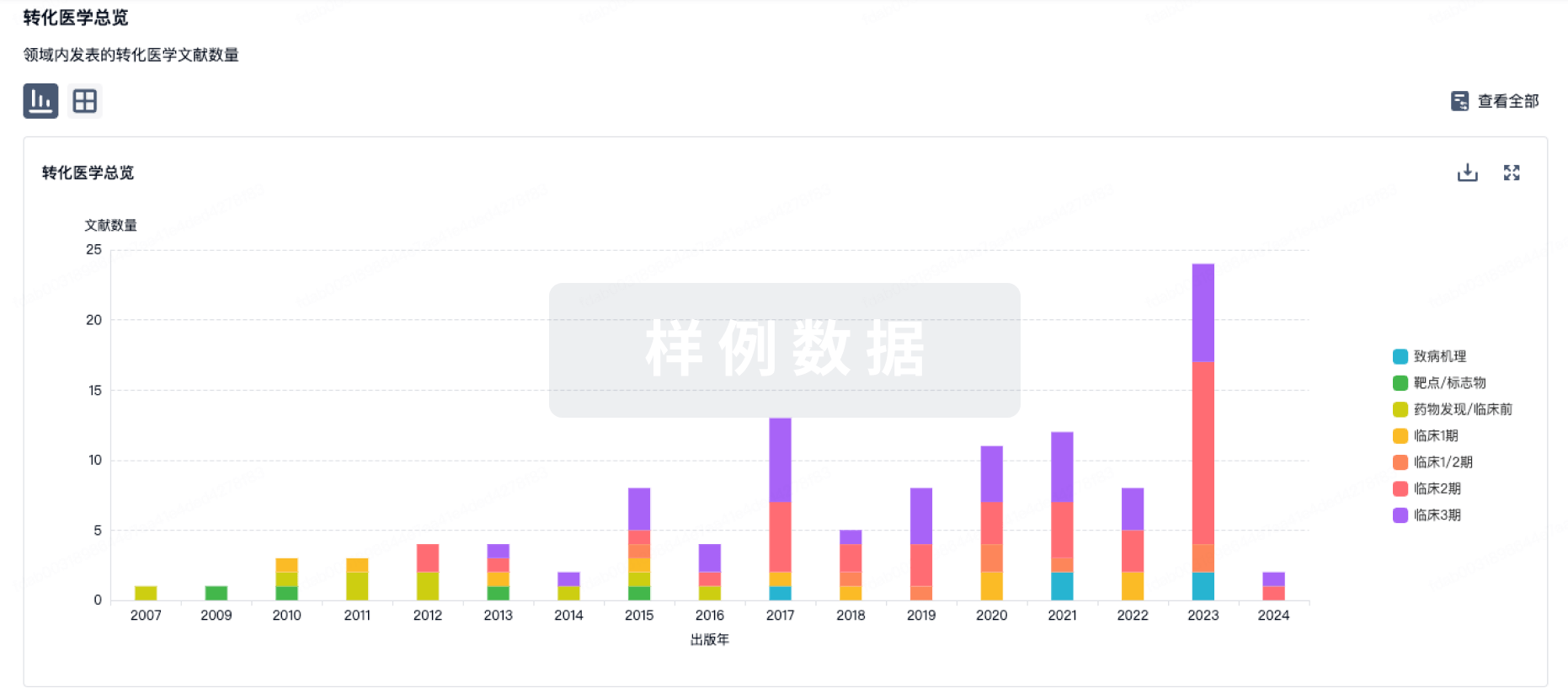
药物交易
使用我们的药物交易数据加速您的研究。
登录
或
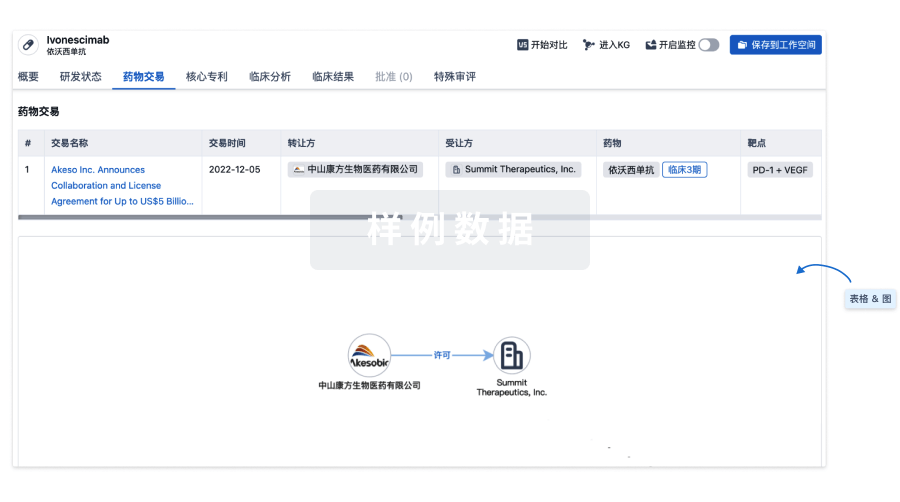
核心专利
使用我们的核心专利数据促进您的研究。
登录
或

临床分析
紧跟全球注册中心的最新临床试验。
登录
或
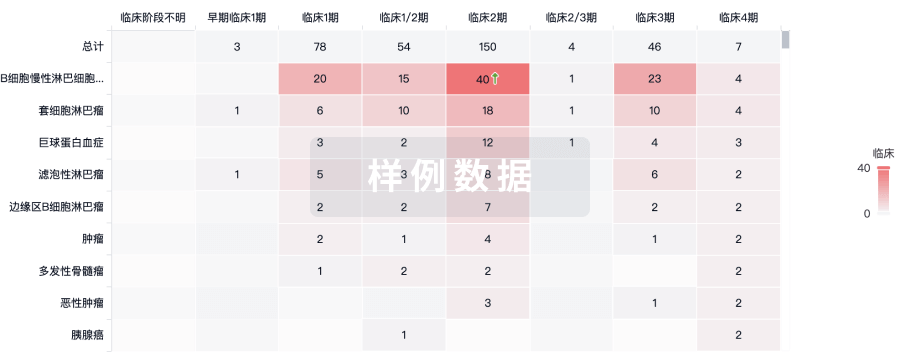
批准
利用最新的监管批准信息加速您的研究。
登录
或
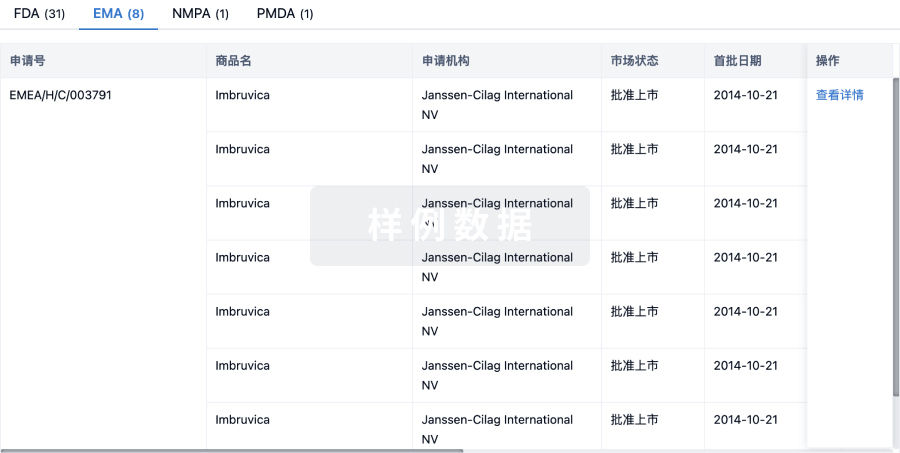
特殊审评
只需点击几下即可了解关键药物信息。
登录
或
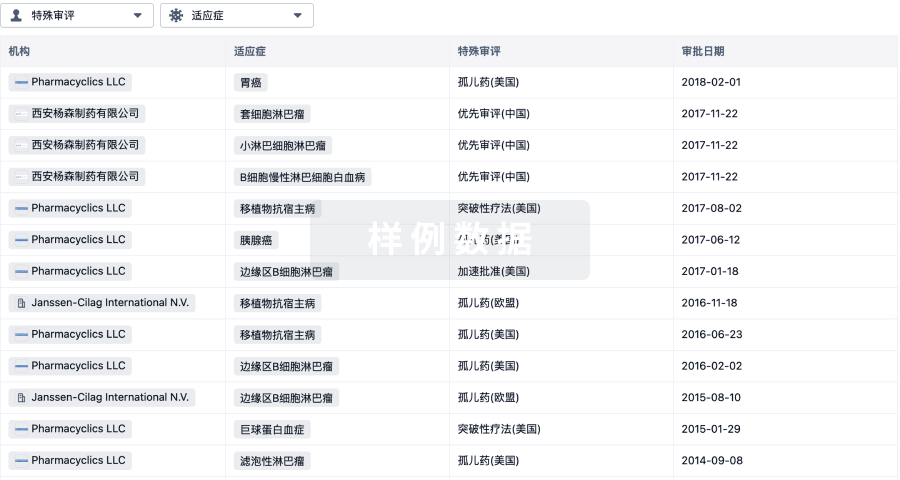
生物医药百科问答
全新生物医药AI Agent 覆盖科研全链路,让突破性发现快人一步
立即开始免费试用!
智慧芽新药情报库是智慧芽专为生命科学人士构建的基于AI的创新药情报平台,助您全方位提升您的研发与决策效率。
立即开始数据试用!
智慧芽新药库数据也通过智慧芽数据服务平台,以API或者数据包形式对外开放,助您更加充分利用智慧芽新药情报信息。
生物序列数据库
生物药研发创新
免费使用
化学结构数据库
小分子化药研发创新
免费使用




